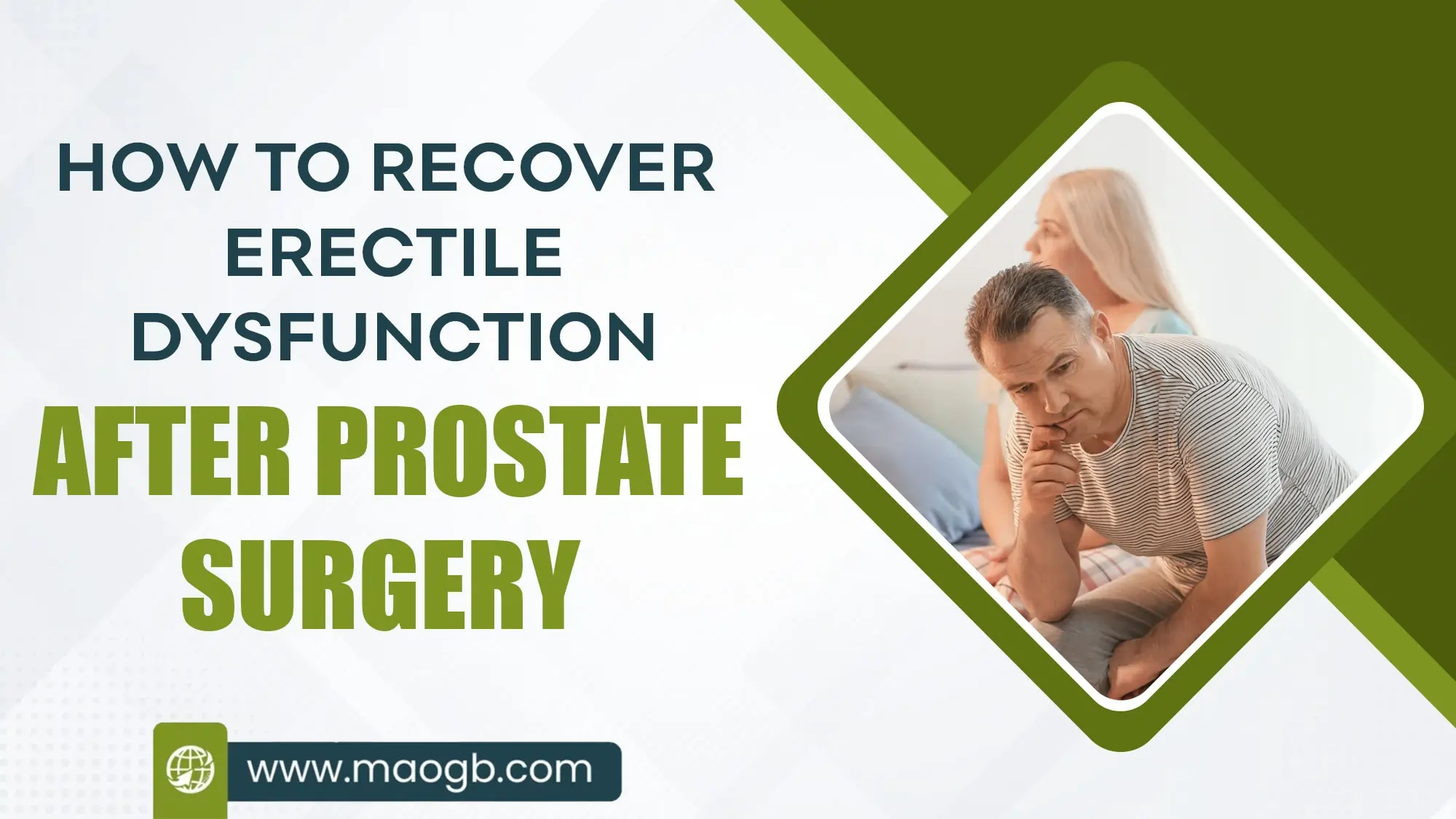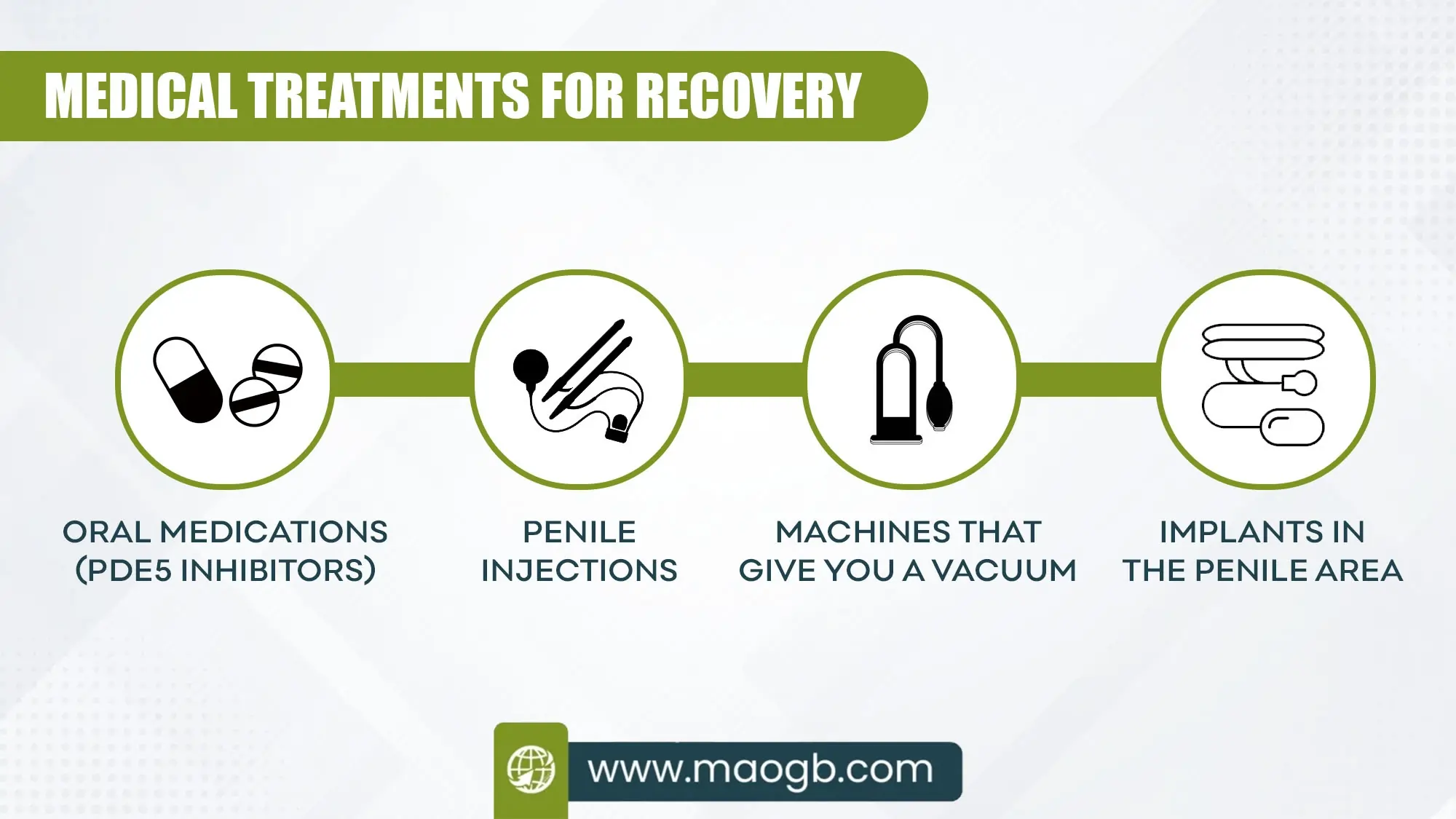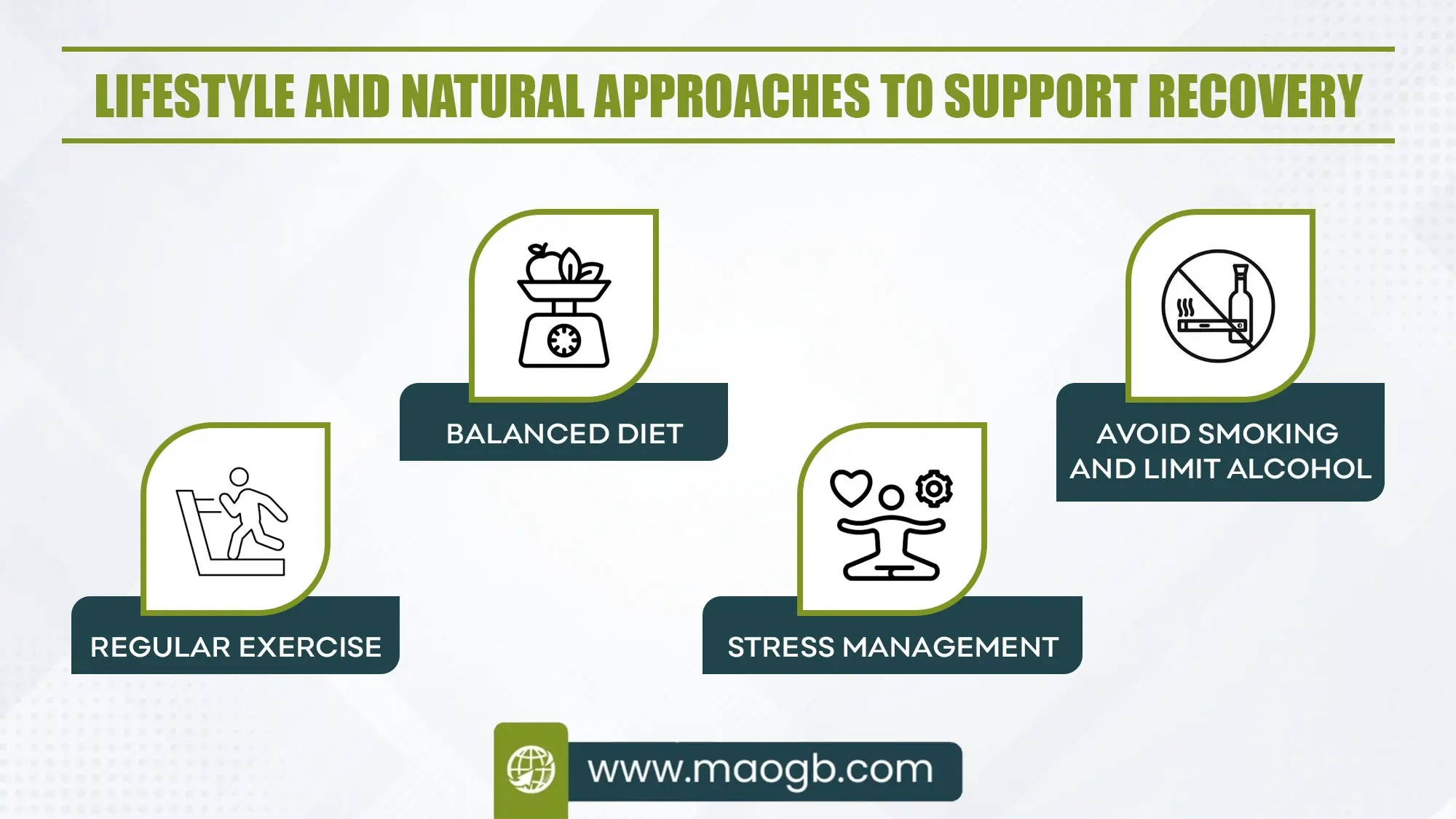Blog
How To Recover Erectile Dysfunction After Prostate Surgery

Men who have been diagnosed with prostate cancer or other conditions connected to the prostate often only need surgery to save their lives.
Erectile Dysfunction After Prostate Surgery, on the other hand, is one of the most common side effects of this surgery.
This disease can be upsetting emotionally and put a strain on close relationships. The good news is that recovery is possible with the right mix of medical care, therapy, and changes to one’s lifestyle.
This article talks about why men have trouble getting or keeping an erection after prostate surgery and what they can do to get their sexual function back quickly and easily.
Understanding Erectile Dysfunction After Prostate Surgery
Why does it happen?
The prostate gland is close to a number of important blood systems and nerves that control erections. These nerves can be hurt during prostate surgery, especially radical prostatectomy, in which the whole prostate is removed.
Can you take Viagra with blood thinners is a common concern for men recovering from prostate surgery, as medications like
Viagra are often prescribed to support erectile function. This is because drugs like Viagra are often recommended to help men keep their erections.
Before taking these medicines, it’s important to talk to a doctor to make sure you’re safe and to avoid any possible conflicts.
Healing can take months or even years, even when techniques are used to spare nerves. It depends on how fast each person heals.
Types of Prostate Surgery and Their Impact
Not all prostate surgeries affect erectile function equally:
- Radical Prostatectomy – Highest risk due to nerve proximity.
- Transurethral Resection of the Prostate (TURP) – Moderate impact, often temporary ED.
- Laparoscopic or Robotic-Assisted Surgery – Minimally invasive and nerve-sparing, leading to better recovery outcomes.
Understanding your surgical type and the extent of nerve preservation is the first step in managing Erectile Dysfunction After Prostate Surgery.
Timeline for Recovery
Getting better from erectile dysfunction after prostate surgery is different for each person. Men can get natural erections again in a few months for some, but for others, it could take up to two years or longer.
Age, general health, erectile function before surgery, surgical technique, and rehabilitation treatments all play a big role in how well someone recovers.
Most of the time, the first signs of erectile dysfunction come back between 6 and 12 months after surgery.
It’s important to be patient, consistent, and follow expert advice. It’s also important to remember that lifestyle choices, like using cannabis erectile dysfunction, can affect recovery, since cannabis may change the way blood flows and nerves heal.
Medical Treatments for Recovery

1. Oral Medications (PDE5 Inhibitors)
- The first choice for treating erectile dysfunction Oral drugs like Sildenafil (Viagra), Tadalafil (Cialis), and Vardenafil (Levitra) are often used after prostate surgery.
- These drugs make it easier for men to get and keep an erection by increasing blood flow to the penis.
- Sometimes, doctors may also suggest options, such as Cenforce 150 mg, which has sildenafil citrate in it and works the same way as Viagra.
- Under medical guidance, taking these medicines regularly right after surgery can help improve blood flow, help nerves heal, and speed up the return of natural erectile function.
2. Penile Injections
If pills don’t work, penile shots like alprostadil can help get an erection by relaxing the blood vessels in the penile area. It might sound uncomfortable, but for many people, it works well during the recovery phase.
3. Machines That Give You a Vacuum
These non-invasive gadgets make a vacuum in the penis, which brings blood there and causes an erection. Regular use not only lets you be sexual, but it also stops tissue loss and helps your erection function return naturally over time.
4. Implants in the Penile Area
Men who don’t get better with medicines or gadgets may be able to get a penile prosthesis surgically implanted. These implants are a permanent answer that make it possible to get an erection mechanically. They also make life better overall.
Lifestyle and Natural Approaches to Support Recovery
Healing from Erectile Dysfunction After Prostate Surgery isn’t just about taking medicine; changes in living can also make a big difference in blood flow, hormone balance, and mental health.

1. Regular Exercise
Engage in moderate physical activities such as:
- Walking
- Swimming
- Pelvic floor (Kegel) exercises
Kegel exercises, in particular, strengthen the muscles that support erectile function and bladder control, speeding up recovery.
2. Balanced Diet
Include foods rich in antioxidants and heart-healthy nutrients:
- Leafy greens (spinach, kale)
- Berries
- Fish rich in omega-3
- Nuts and seeds These foods improve blood circulation and overall vascular health, which is essential for erectile function.
3. Stress Management
- Anxiety and stress can make erectile dysfunction after prostate surgery a lot worse, so taking care of your mental health is an important part of getting better.
- Some ways to relax are deep breathing, meditation, yoga, counseling, or sex therapy.
- Using these methods can help lower stress and boost confidence.
- Taking care of your mental stress improves blood flow and makes treatments work better, like erectile dysfunction pills that are often given to help people get better.
- Men can easily regain sexual function and keep a positive attitude while they heal if their mental and physical health are in balance.
4. Avoid Smoking and Limit Alcohol
Both smoking and drinking too much can hurt blood vessels and nerves, which makes healing take longer. Quitting smoking and drinking less booze can make treatment work a lot better.
Rehabilitation of the Pelvic Floor
Pelvic floor treatment is an important part of getting better after having prostate surgery for erectile dysfunction. Physiotherapists show men specific movements that strengthen the muscles that support the penis and bladder.
This makes control and circulation better. These movements improve blood flow, help nerves heal, and stop urinary leakage, which is another common issue that people have after prostate surgery.
Doing these workouts every day can help you see results in a few months if you are consistent. Along with therapy, some men may use drugs like Cenforce 200 mg under the care of a doctor to help their erectile recovery and improve their general sexual function.
Psychological and Emotional Healing
People who have trouble getting or keeping an erection often feel bad about themselves, which can lead to anger, loss of confidence, or relationship problems.
It can be very helpful to get help from a therapist or psychologist who specializes in sexual health. A lot of guys also benefit from couples therapy, which helps them get back together with their partner and talk to them while they’re recovering.
Don’t forget that health isn’t just about the body; mental strength is just as important. When You Should Get Help from a Pro If your erectile dysfunction doesn’t get better six months after surgery, you should see a doctor.
If you have persistent erectile dysfunction after prostate surgery, you may need more advanced treatment or a different approach to your current treatment.
Doctors may also check hormone levels, like testosterone levels, to make sure that ED isn’t caused by an underlying problem.
Before trying any over-the-counter medicines or asking what is the best cream for erectile dysfunction, it’s important to talk to a doctor because not all of them are safe or helpful.
Do not try to treat yourself or only depend on remedies you find online, as they could have harmful side effects or interact badly with medicines you are already taking.
Future of Erectile Dysfunction Recovery
As medicine progresses, the future for men who have erectile dysfunction after prostate surgery keeps getting better.
Researchers are looking into ways to speed up nerve regeneration and improve natural healing, such as nerve grafting, stem cell therapy, and platelet-rich plasma (PRP) injections.
Even though more study needs to be done, these treatments give men who want more effective and less invasive ways to recover hope.
Key Takeaways
- Erectile Dysfunction After Prostate Surgery is a common yet treatable condition.
- Recovery can take time, but consistent therapy, medications, and healthy lifestyle changes significantly improve outcomes.
- Communication with healthcare providers and emotional support from partners are crucial for overall well-being.
- New medical technologies continue to offer innovative solutions for faster recovery and better quality of life.
Conclusion
To get better from erectile dysfunction after prostate surgery, you need to be patient, persistent, and use a variety of methods.
Men can slowly regain their confidence and sexual performance by doing pelvic floor exercises, making healthy habits, and getting emotional support.
It’s important to remember that recovery is possible, even if the road is hard. Thanks to advances in medicine, the chances of returning to a full and busy sex life are higher than ever.
Reference
